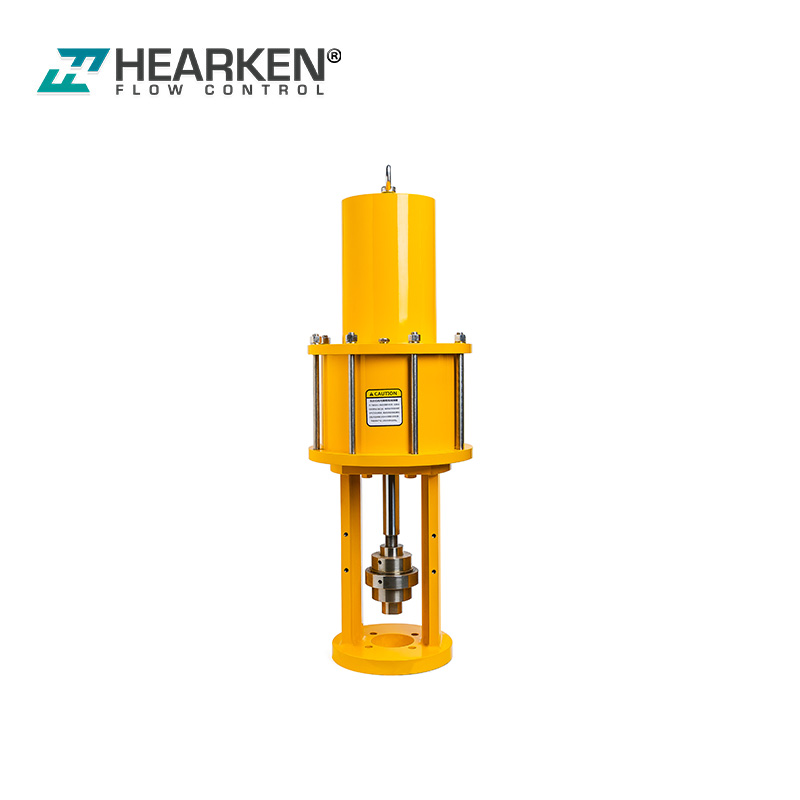Understanding Pneumatic Linear Actuators
Pneumatic linear actuators are essential components in various industrial and automation applications. They convert compressed air energy into linear motion, providing a reliable and efficient means of moving or controlling mechanisms. This article delves into the workings, types, advantages, and applications of pneumatic linear actuators, offering a thorough understanding of their role in modern engineering.
I.What is a Linear Pneumatic Actuator?
A linear pneumatic actuator is a device that uses compressed air to produce motion in a straight line. Unlike rotary actuators that produce rotational motion, linear actuators move in a linear path, making them ideal for applications requiring precise linear movement. These actuators are widely used in industries such as manufacturing, automotive, aerospace, and robotics due to their simplicity, reliability, and cost-effectiveness.
II.How Does a Linear Pneumatic Actuator Work?
The basic principle behind a pneumatic linear actuator involves the conversion of compressed air energy into mechanical motion. Here’s a step-by-step breakdown of how it works:
1.Air Supply: Compressed air is supplied to the actuator through an inlet port.
2.Cylinder and Piston: The actuator consists of a cylinder and a piston. The compressed air enters the cylinder, exerting pressure on the piston.
3.Motion Generation: The pressure causes the piston to move linearly within the cylinder. The direction of movement depends on which side of the piston the air is applied to.
4.Control Valves: Directional control valves regulate the airflow into and out of the cylinder, controlling the piston's movement.
5.Output Shaft: The piston is connected to an output shaft, which extends or retracts based on the piston's movement, providing the desired linear motion.
III.Types of Linear Pneumatic Actuators
Pneumatic linear actuators come in various designs to suit different applications. The main types include:
1.Single-Acting Actuators: These actuators use compressed air to move the piston in one direction, while a spring returns it to the original position. They are simple and cost-effective but offer limited force and stroke length.
2.Double-Acting Actuators: In these actuators, compressed air is used to move the piston in both directions. They provide more control and higher force compared to single-acting actuators but are more complex and expensive.
3.Rodless Actuators: These actuators do not have a piston rod extending outside the cylinder. Instead, they use a magnetic or mechanical coupling to transfer motion. They are compact and suitable for applications with limited space.
4.Telescoping Actuators: These actuators have multiple stages that extend and retract, providing a longer stroke length in a compact form. They are used in applications requiring extended reach.

IV.Advantages of Pneumatic Linear Actuators
Pneumatic linear actuators offer several benefits that make them a preferred choice in many applications:
1.Simplicity and Reliability: Pneumatic systems are relatively simple, with fewer moving parts compared to hydraulic or electric systems. This simplicity translates to higher reliability and lower maintenance requirements.
2.Cost-Effectiveness: Compressed air is generally cheaper and more readily available than other power sources. Additionally, pneumatic components are often less expensive than their hydraulic or electric counterparts.
3.Safety: Pneumatic systems are inherently safe as they do not involve electricity, reducing the risk of fire or explosion in hazardous environments.
4.High Speed and Force: Pneumatic actuators can achieve high speeds and provide substantial force, making them suitable for heavy-duty applications.
5.Clean Operation: Since they use air, pneumatic actuators do not produce contaminants, making them ideal for cleanroom environments and applications requiring high hygiene standards.

V.Applications of Pneumatic Linear Actuators
Pneumatic linear actuators are versatile and find use in a wide range of applications across various industries:
1.Manufacturing: Used in assembly lines, material handling, and packaging machines for precise movement and positioning.
2.Automotive: Employed in braking systems, suspension systems, and automated production lines.
3.Aerospace: Utilized in aircraft landing gear, cargo handling systems, and flight control mechanisms.
4.Robotics: Integrated into robotic arms and automated systems for precise and controlled movement.
5.Medical: Used in medical devices and equipment requiring precise and sterile linear motion.
6.Food and Beverage: Applied in processing and packaging machinery where cleanliness and hygiene are critical.
Conclusion
Pneumatic linear actuators are indispensable in modern engineering and automation. Their ability to provide reliable, efficient, and precise linear motion makes them a cornerstone in various industrial applications. Understanding their working principles, types, advantages, and applications can help in selecting the right actuator for specific needs, ensuring optimal performance and longevity. As technology advances, pneumatic linear actuators continue to evolve, offering even greater capabilities and expanding their range of applications.





